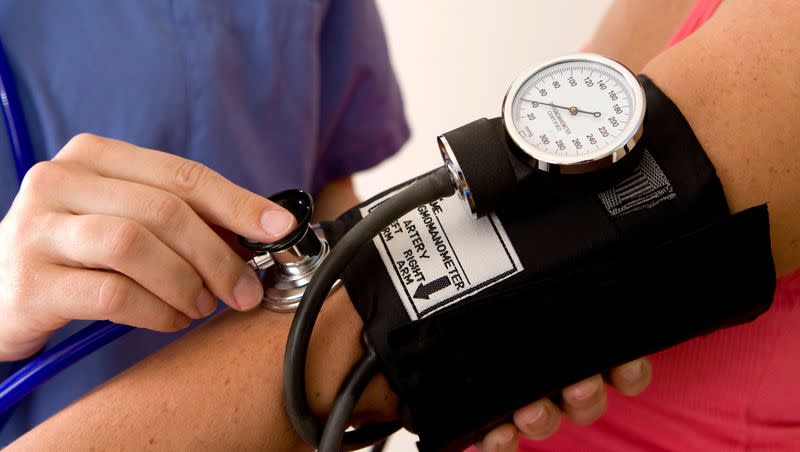The silent killer: Understanding causes, symptoms and preventing high blood pressure

High blood pressure, or hypertension, is a condition where the force of the blood against the walls of the arteries is consistently too high.
Surprisingly, almost 50% of Americans ages 20 and above — which equates to over 122 million individuals — suffer from high blood pressure, per USC Schaeffer.
A health care professional can measure blood pressure and, depending on age, every person should have their blood pressure checked rather frequently.
For people 18 and older who are relatively healthy, the Mayo Clinic encourages blood pressure checkups as often as once every 2-5 years. If you are 40 or older, or younger with health complications related to high blood pressure, a checkup once a year is recommended.
According to the Centers for Disease Control and Prevention, high blood pressure normally happens over time. “It can happen because of unhealthy lifestyle choices, such as not getting enough regular physical activity. Certain health conditions, such as diabetes and having obesity, can also increase the risk for developing high blood pressure. High blood pressure can also happen during pregnancy.”
It can also have a genetic component to it, meaning a person can be genetically predisposed to getting high blood pressure because their parents may struggle with it.
However, it is usually a combination of genetic, environmental and lifestyle factors that determine the overall risk.
How is blood pressure measured?
Blood pressure is measured using two numbers: the systolic pressure and the diastolic pressure.
“The systolic pressure (higher number) is the force at which your heart pumps blood around your body,” according to the National Health Service.
The “diastolic pressure (lower number) is the resistance to the blood flow in the blood vessels between heartbeats when blood is pumped around your heart. They’re both measured in millimeters of mercury (mmHg),” the NHS said.
Related
What is a normal blood pressure?
A generally healthy blood pressure would be measured between 90/60mmHg and 120/80mmHg. Anything higher could be a concern, and changes would need to be made in a person’s life to reduce the risk of high blood pressure.
Each individual’s blood pressure can vary. What might be deemed high or low for one person could be typical for another.
Always consult with a health care professional for personalized advice and interpretation of blood pressure readings.
Risks of high blood pressure
High blood pressure is known as the “silent killer” because it typically doesn’t present with noticeable symptoms, even when it reaches dangerously high levels. Many people with hypertension are unaware of their condition.
Without routine blood pressure checks, it can go undetected and untreated for years. According to the American Heart Association, hypertension is problematic because chronic high blood pressure can lead to severe health complications, such as:
Heart attack.
Stroke.
Heart failure.
Kidney disease and/or failure.
Vision loss.
Sexual dysfunction.
If these complications are not detected and managed in time, they can be fatal, thus earning hypertension its ominous nickname.
How to prevent high blood pressure
For many, making lifestyle changes can reduce health risks associated with high blood pressure.
The CDC recommended changes that an individual at risk can take to live a healthier life:
Try to get at least 150 minutes of physical exercise every week (30 minutes a day for five days).
Don’t smoke.
Eat a balanced diet with limited sodium.
Maintain a healthy weight.
Try to manage stress levels.
It is important to incorporate these recommendations as you age and become more at risk of high blood pressure.
“It is important to understand that the components that make up our blood pressure include any resistance our heart has to push against,” Viet Le, an associate professor of preventive cardiology and physician associate at Intermountain Health, told USA Today.
Le added, “As we age, our arteries lose elasticity and essentially become stiffer, which can affect how much blood the heart needs to push, in the same way that blowing into a balloon that has not been stretched beforehand takes much more effort than blowing into it after you have stretched it.”

